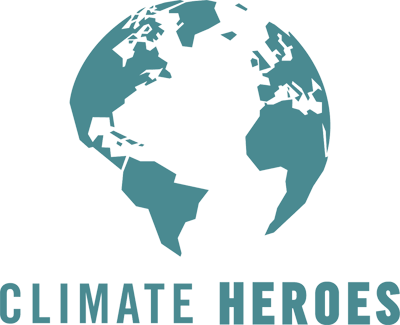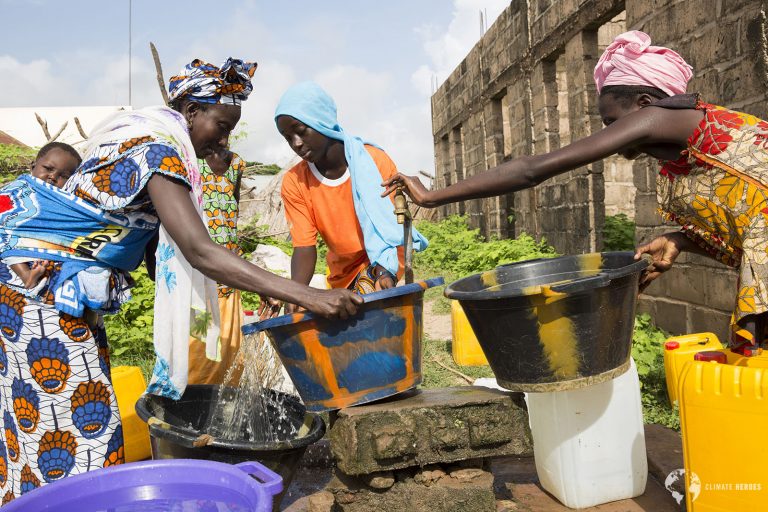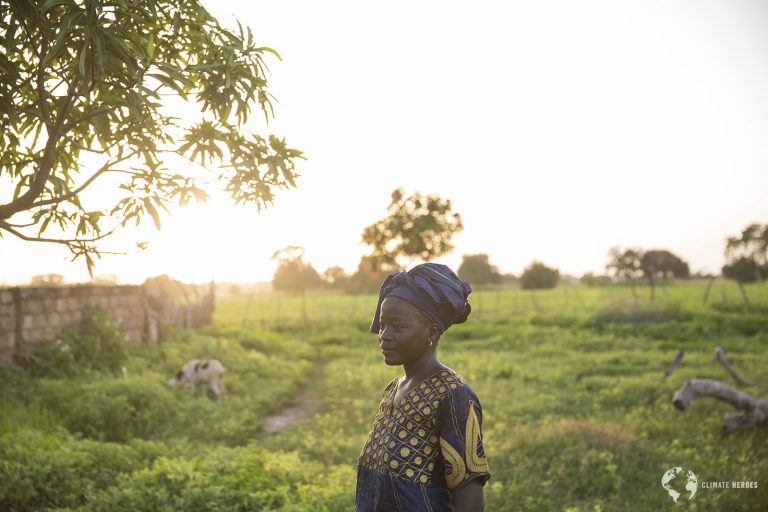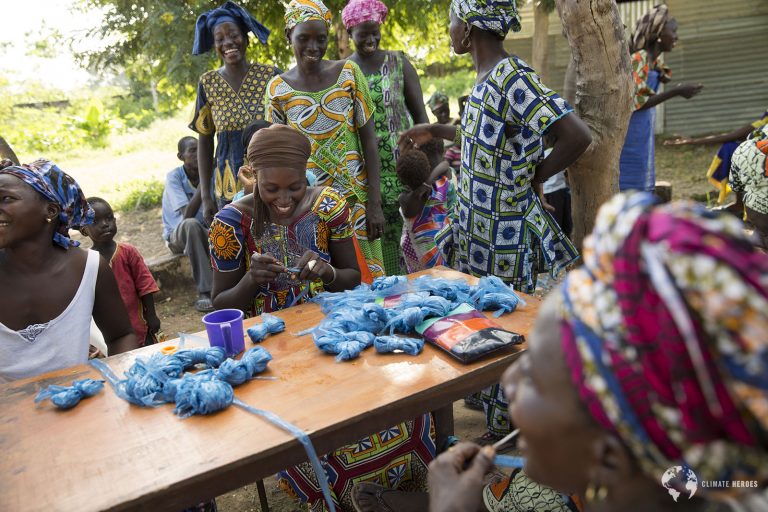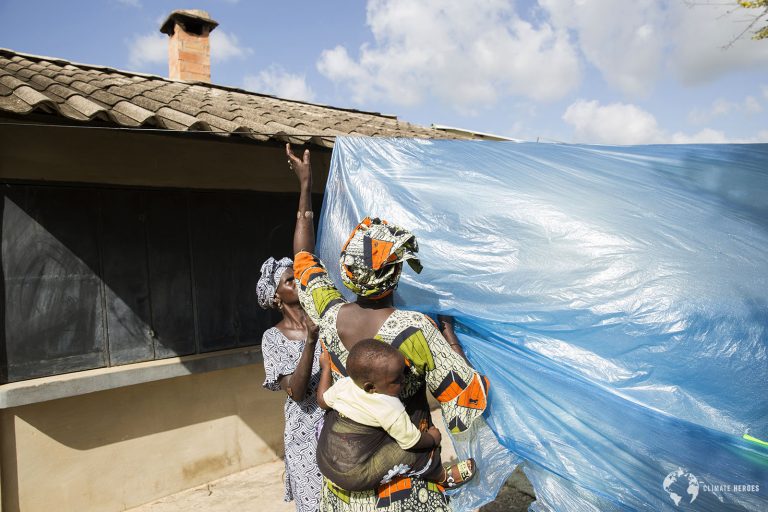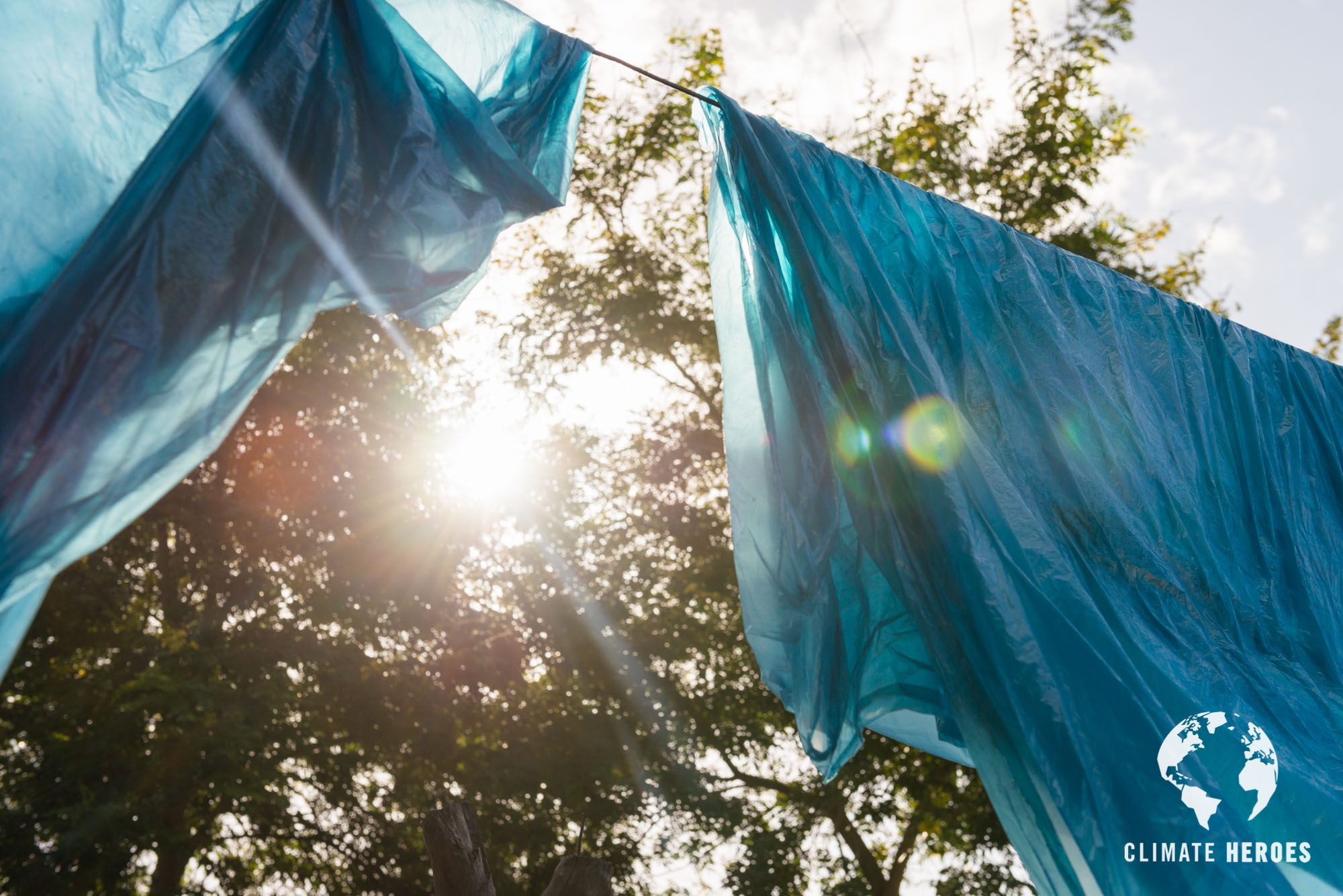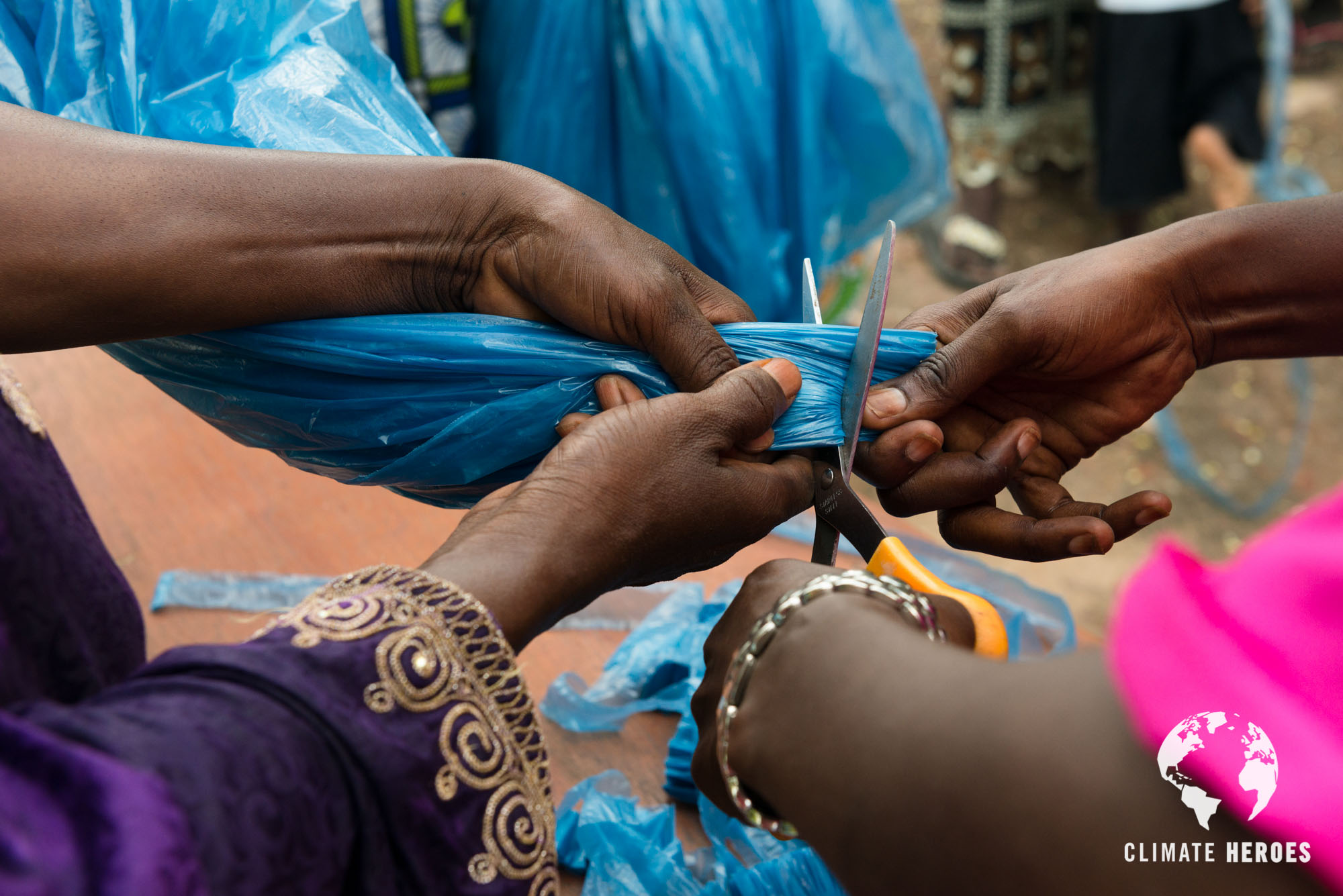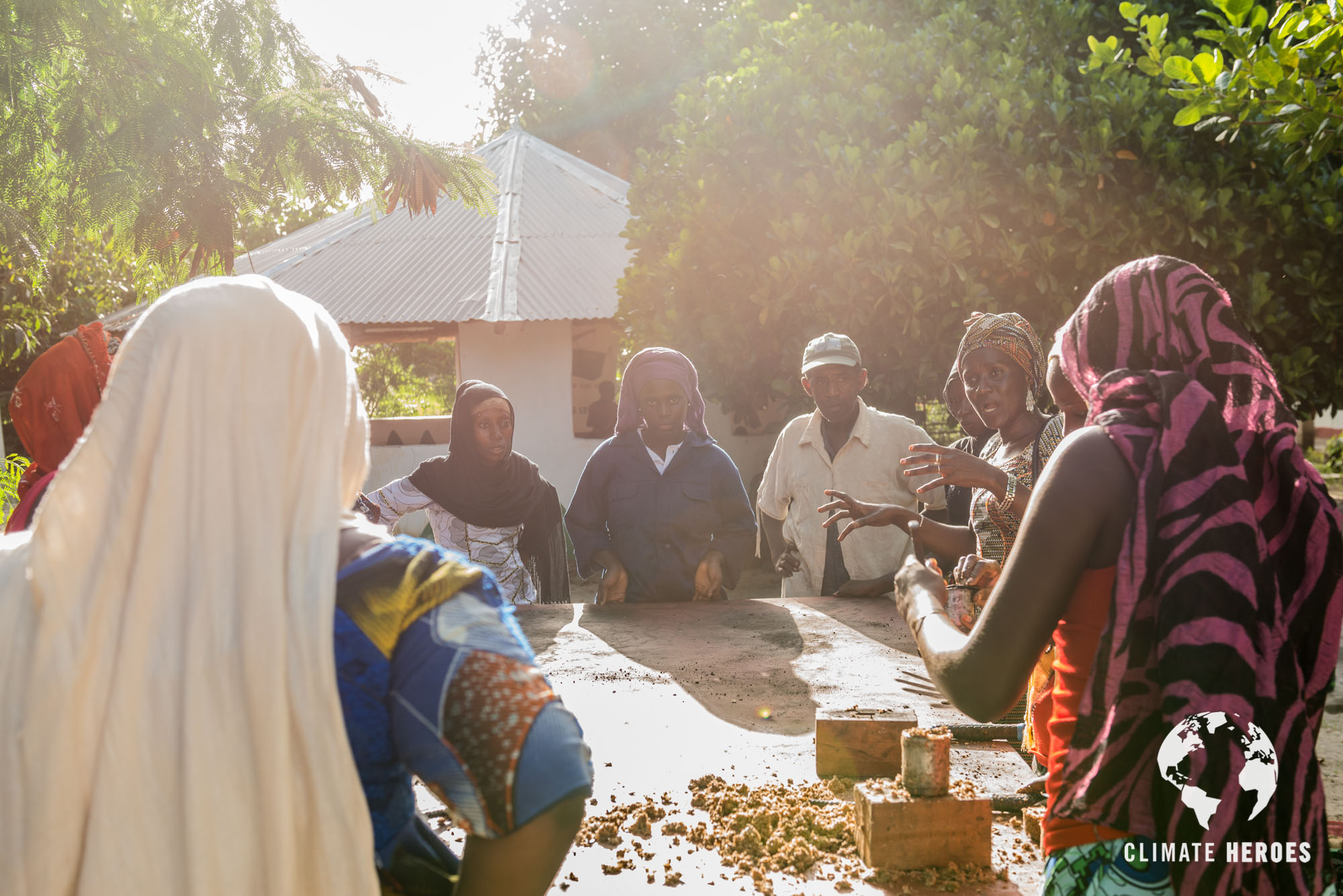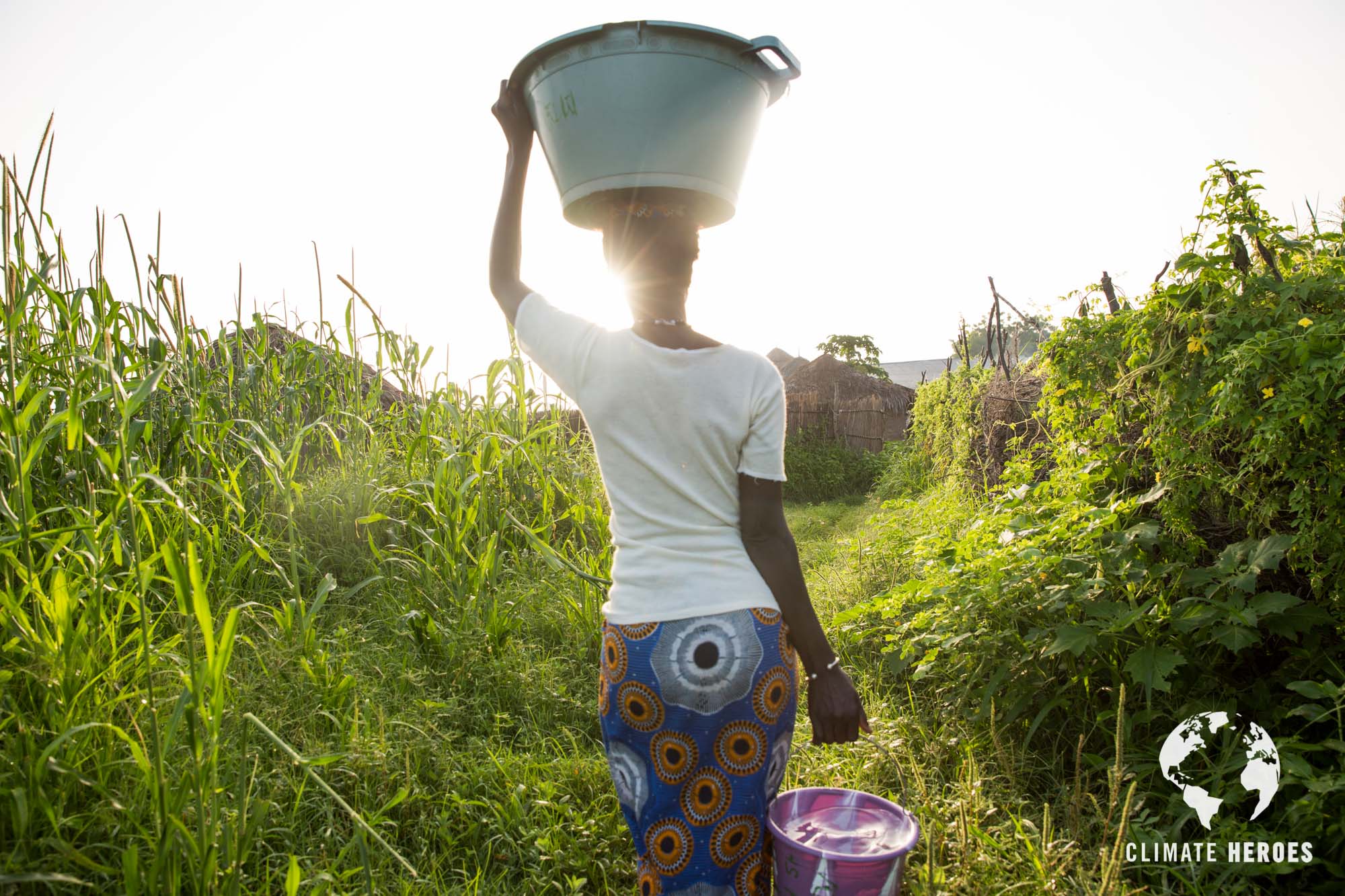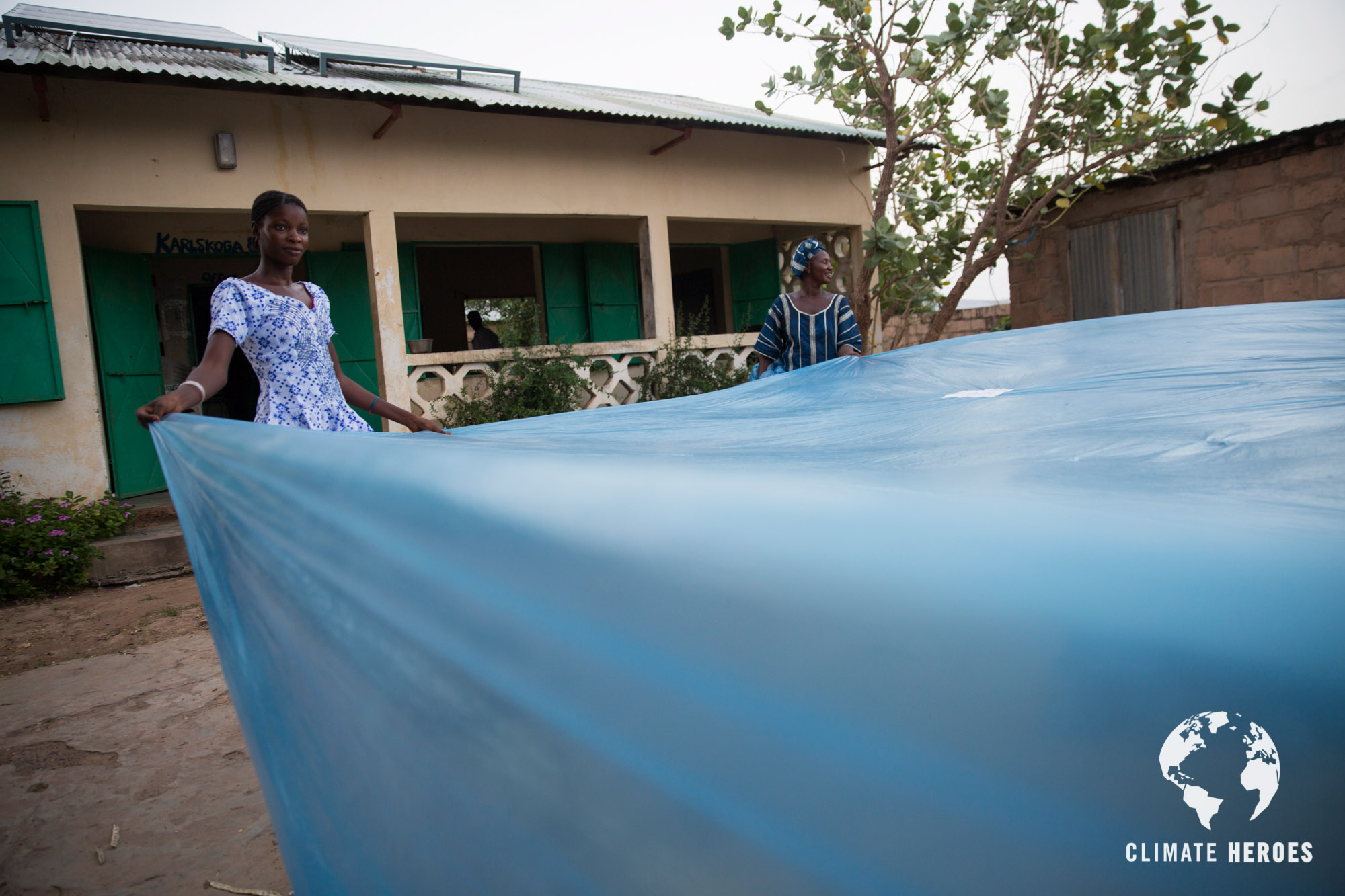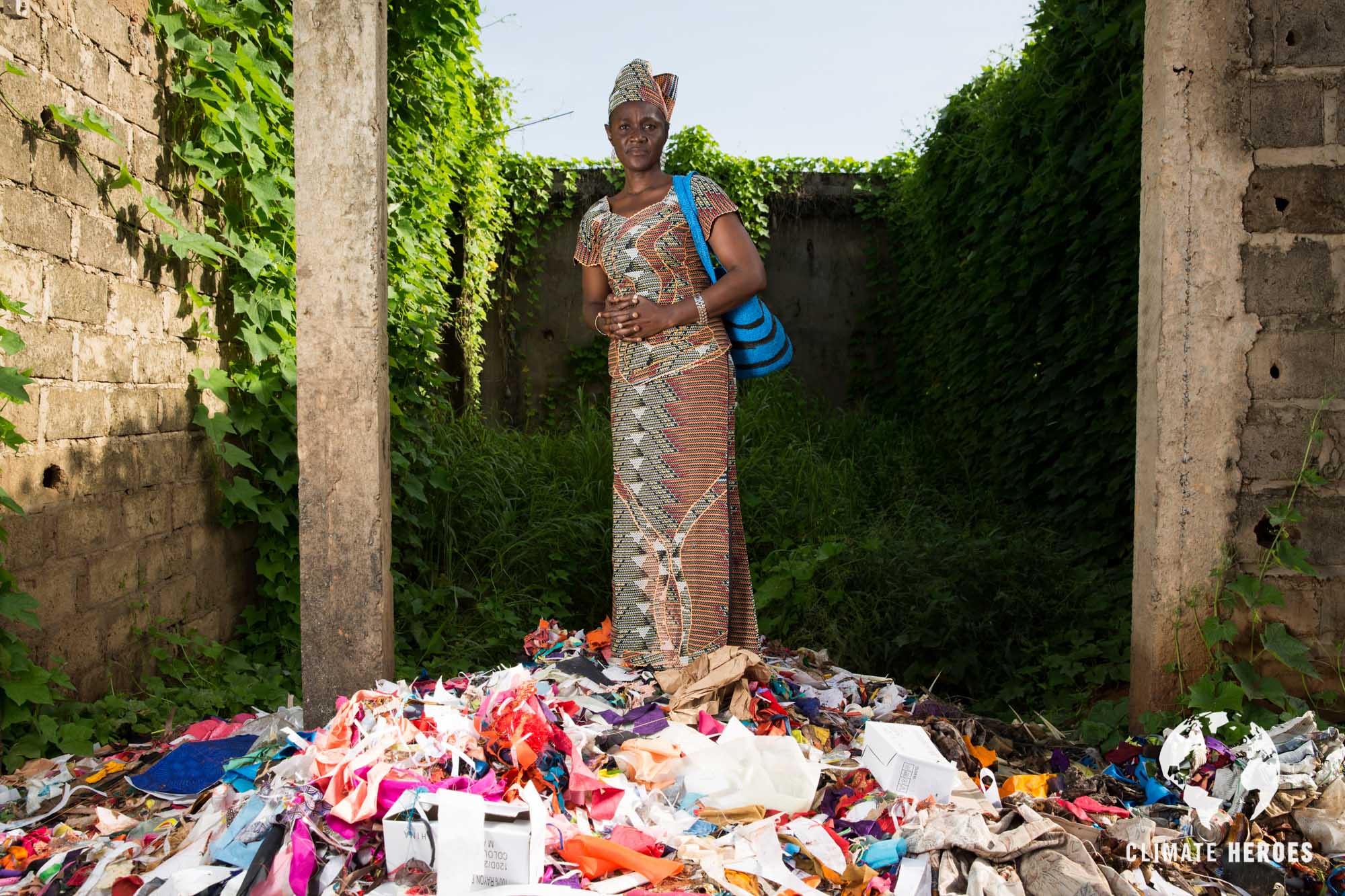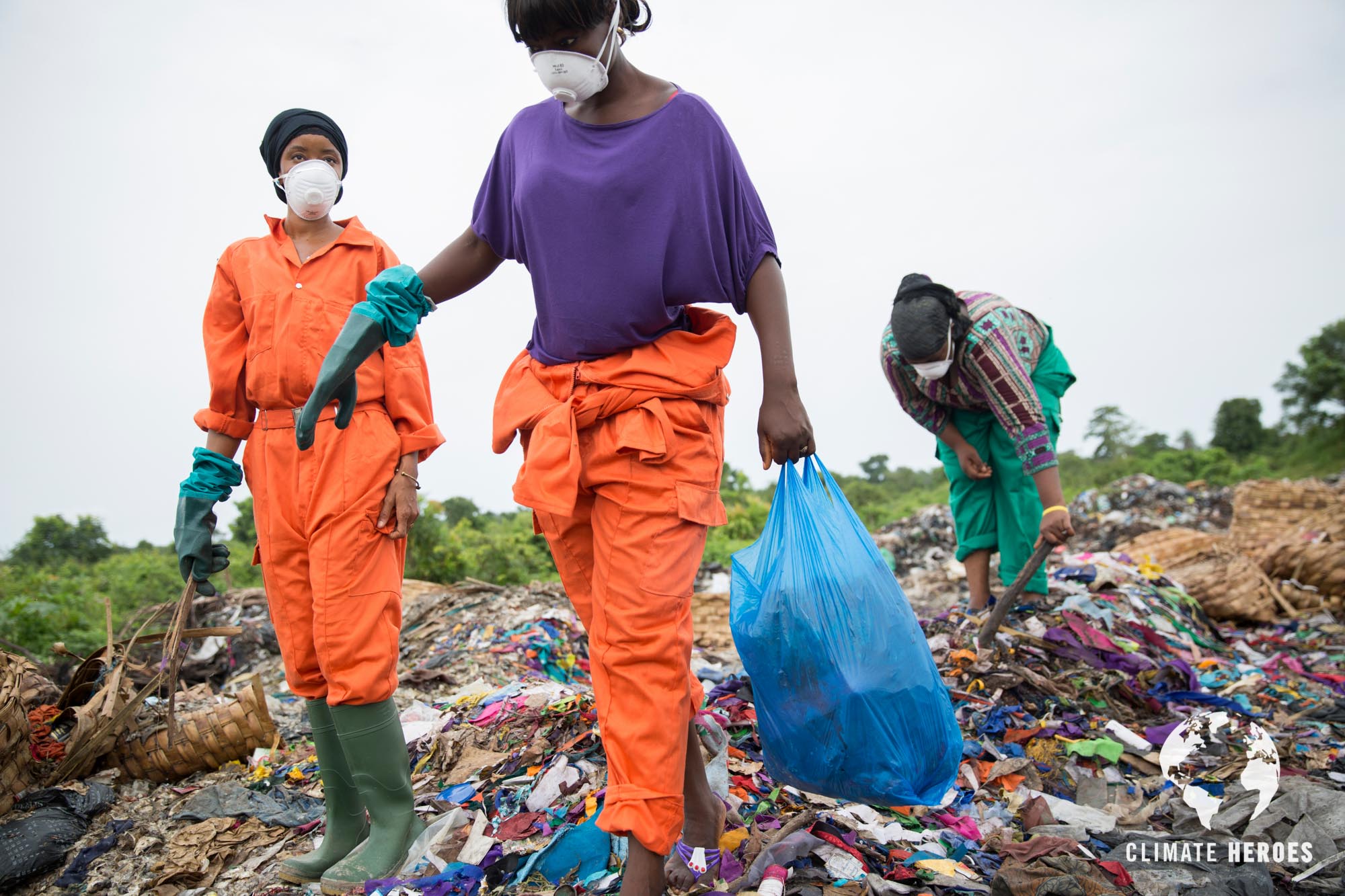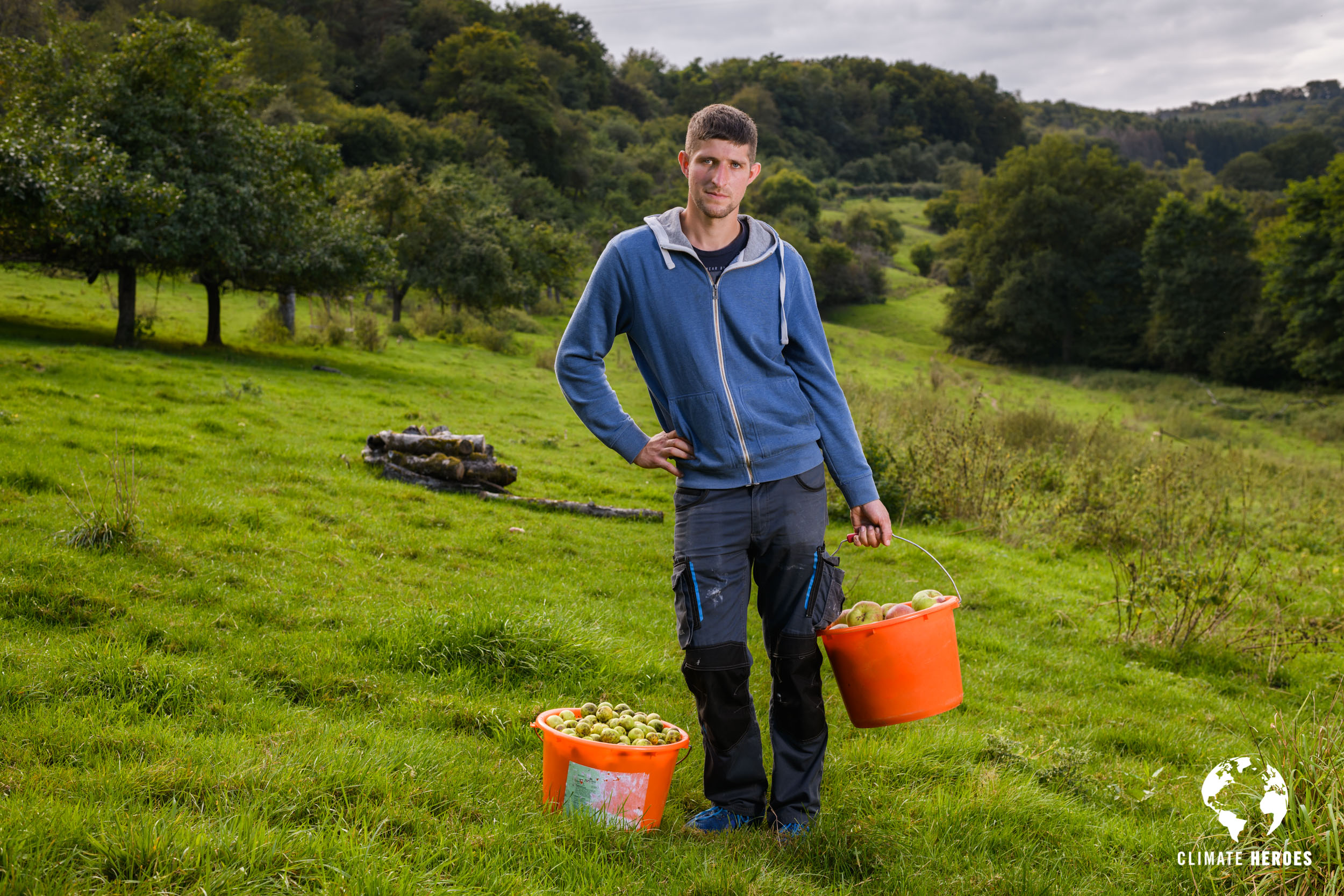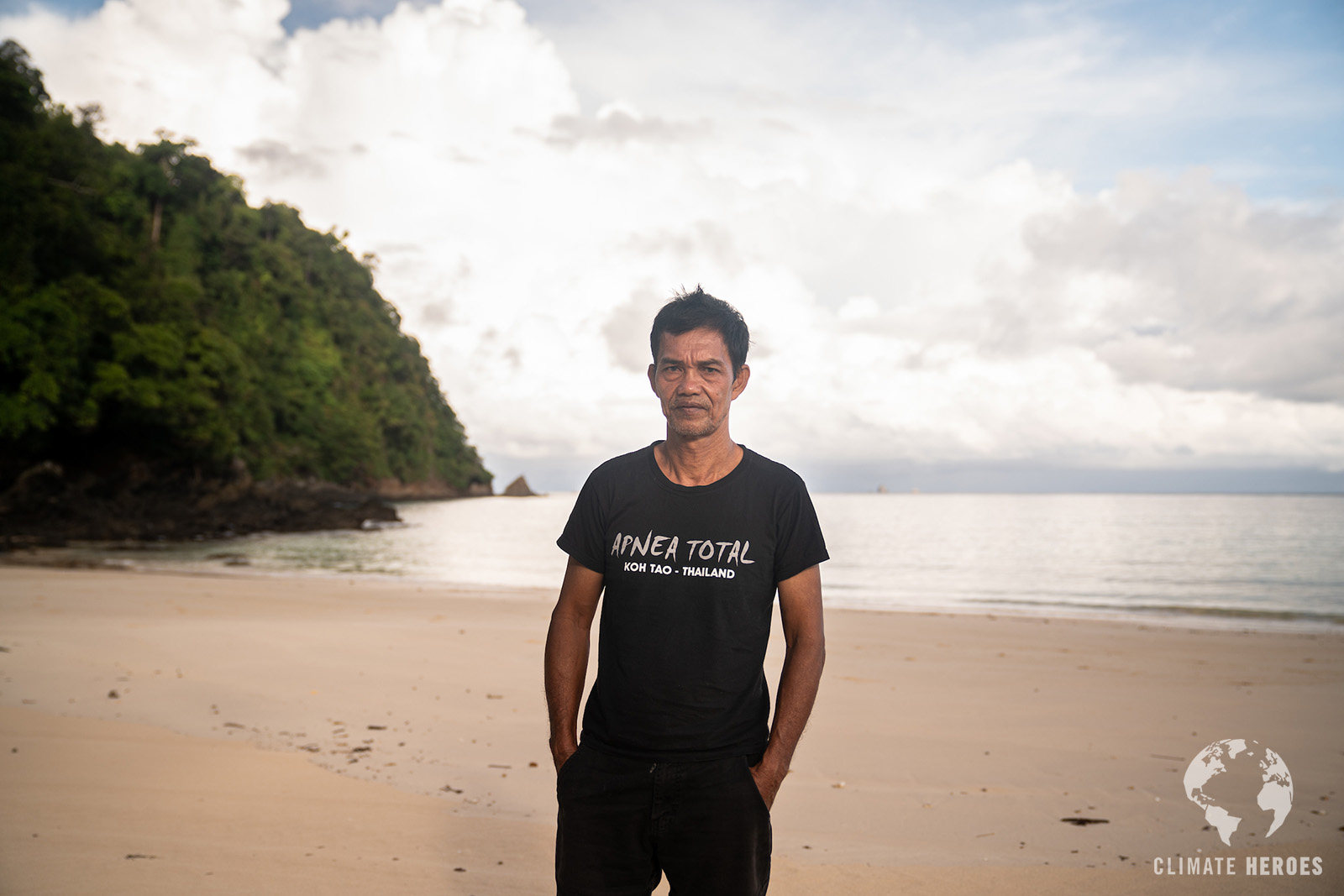Isatou Ceesay and the Women Turning Waste to Wealth
Isatou stood at the edge of the village and looked at the ugly heap of rubbish piled high on the red earth. Amongst the discarded tins, food and bike tyres, one thing stood out: there were plastic bags everywhere. Mosquitoes swarmed above murky puddles of water pooled on bags on the ground. Two of her neighbour’s goats perched on the rubbish, foraging for food. She shooed them away. Isatou had heard that many people’s goats had died recently. When the butcher cut them open, he had found plastic knotted in their stomachs.
It was 1997, and 25-year-old Isatou Ceesay was taking a walk through her village of N’jau in the centre of the Gambia – the smallest country in Africa. As she turned down the dusty main street, women greeted her from their courtyards as they prepared vegetables and washed clothes. The smell of familiar dishes filled the air. Children played in a clearing by the forest, and cows grazed near a field of peanuts. Later that afternoon, she sat with five friends in the shade of a tree for the first meeting of her women’s group.
Over recent years, Isatou’s community had faced increasing problems with waste. In the Gambia, many people live in poverty. Here and in many countries around the world, there are no weekly rubbish collections to take away waste, so people have no choice but to leave it piled in the streets. Ever since she could remember, in her village, people had thrown their rubbish behind their homes. As a little girl, she had carried shopping back from the market in a basket, but then everyone started using plastic bags instead. Now those bags were killing animals, there were malaria outbreaks from mosquitoes, and vegetables weren’t growing because of rubbish in the soil. Worst of all, Isatou had watched her friends burning plastic as fuel for cooking. This was dangerous, releasing toxic fumes that were harmful to people. The waste problem was huge, but Isatou was determined to do something about it.
Isatou grew up in N’jau with two sisters and a brother. Her parents were farmers. As a girl, Isatou used bits of waste, like scraps of cloth and wood, to make dolls and other toys. This made her popular with her friends because children in her village didn’t have many things to play with. She was a bright girl who loved learning and always came near the top of her class. Sadly, her father died when Isatou was just 10 years old and her mother was left to support the family alone. Isatou desperately wanted to go to high school, but her mother couldn’t afford to send her. She needed Isatou to work to bring money into the home. This wasn’t unusual; in the Gambia an estimated 75 per cent of children do not have access to a proper education.
So Isatou stayed in N’jau, taking jobs and making and selling things. But she didn’t give up her passion for learning; she realised she would have to find her own way of getting the education that she had missed out on. When she was 20, she sold the cow she had inherited when her father died and used the money to attend Gambia Technical Training Institute in the capital city, Banjul, to train as a secretary. After returning home, she became a volunteer with the US Peace Corps, seeing this as a chance to get more training while helping her community. It was through the Peace Corps that Isatou learned about the possibilities of recycling waste, knowledge that would change her life and the lives of many in N’jau and beyond.
Isatou’s sister had taught her how to crochet, and this gave her an idea for how to upcycle the plastic bags that were causing so many problems – changing them from waste into something valuable. She would turn them into purses that could be sold to make money. Isatou persuaded five friends to join her to form a new women’s group, and together they collected bags from the rubbish pile, washed them and dried them out. Then, that first afternoon beneath the tree, they carefully cut each bag into a long continuous thread of plastic several centimetres wide – called ‘plarn’, or plastic yarn. With this, they started to crochet small purses for coins, using different coloured plarn to add pretty patterns. It took eight hours or more to make one purse and it used up around 10 plastic bags. The women were delighted with what they had made.
Some people laughed at Isatou and her friends, telling them they were ‘dirty’ for digging around in the rubbish. Some men told her that her plans couldn’t work because she was a woman and too young to be a leader. But Isatou believed in what she was doing. She loved helping others and relished a challenge. In her family, everyone had always worked together to solve problems, and her mother had been a great inspiration to her. In the Gambia, many girls were unable to finish school because they were needed at home to help their mothers. Isatou wanted women to have the chance to learn skills and to earn money, even if they had not been given the chance to finish their education.
Some men did not like to see the women working beneath the tree. Women were expected to take care of their homes and families while the men went out to work, and these men were afraid that the women would learn to no longer obey their husbands. Isatou moved the meetings to her house, where she and her friends could gather at night to chat and crochet purses by candlelight. They worked secretly for months until they had enough purses. Then Isatou took these to a market in the city and managed to sell them all – the city women loved them because they were so unusual.
The women continued with their tiny business, now also making shoulder bags and cosmetic purses from plarn. Many of them were earning money for the first time, and they were able to use it to buy food to help their families through the ‘hungry gap’ – the three months in the year when there were few crops from their farmland. Their husbands noticed how their family’s lives were improving and encouraged their wives in their purse-making. The women no longer worked in secret, and soon others joined them. Within a year, Isatou’s community recycling project had grown to 50 women and she named it the N’jau Recycling and Income Generation Group (NRIGG).
Women in N’jau were now able to save some money, and Isatou helped them to open their own bank accounts. With their savings, many of the women could afford to support their families in ways that would have been impossible before. Their daughters could continue into secondary school and they could pay for medical treatment when they needed it. The women helped their community, too, each contributing some of their earnings to start a community garden to grow vegetables, and to help pay for orphans to go to school.
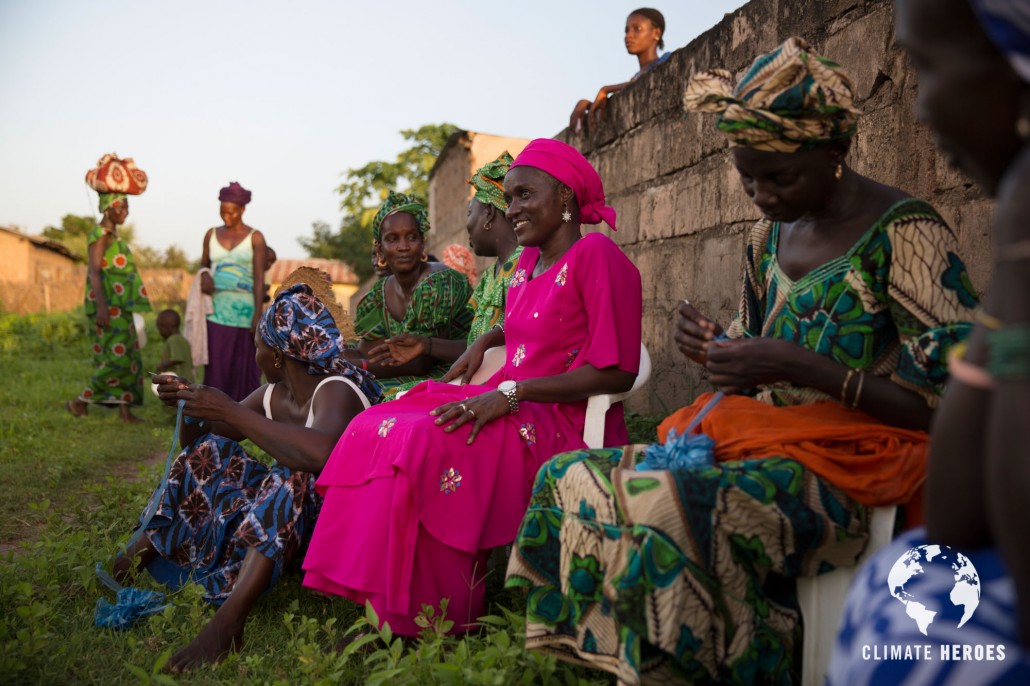
But Isatou wanted to find more ways to share her knowledge and help people in her village. In 2000, she got a job as a language and culture helper with the Peace Corps and, through this, she helped to secure funding to build a skill centre in N’jau, where the women could meet and work together. Here they could learn about the importance of caring for their environment and about the dangers of burning plastic. Isatou started to teach classes on subjects such as gardening, soap making and tie-dying, and the women were able to sell many of the things they made. She had learned about nutrition and gave cooking demonstrations on how to prepare meals full of vitamins and minerals to keep their children healthy.
The women of the NRIGG continued to make their bags and purses and, in 2007, they even started to sell them to people in America, with the help of friends Isatou had made through her work. They began to think of ideas for using other types of waste. They turned food waste into compost for their vegetable plots. They sold scrap metal, turned bike tyres into jewellery, and crafted colourful bags from old rice sacks. They made beads from paper and even learned how to turn truck tyres into armchairs and stools. They made skipping ropes and used leftover bits of plastic bags to stuff footballs, so that local children had toys to play with.
And there were other ways they could help the environment too. People usually burned charcoal for fuel, and this was made from trees cut down from the local forest. The women found a way to combine old coconut husks, mango leaves and dried grass to make briquettes. These burned just as well as charcoal, but were cheaper and saved trees. They started to sell these alongside their upcycled crafts.
Soon the women had run out of plastic bags and other useful waste in N’jau, so they started to collect these from neighbouring villages and shared their knowledge about plastic and upcycling with the people there. In 2009, Isatou got a job leading a women’s project for the Swedish NGO, or non-profit organisation, Future In Our Hands. This gave her the opportunity to work with many more communities throughout the Gambia, while also continuing her own education by studying for a diploma in community development.
In 2012, Isatou won a Making a World of Difference Award from the International Alliance for Women. Two years later, NRIGG became the Women’s Initiative Gambia, and today Isatou has trained over 11,000 people all over her country in the dangers of plastic and the opportunities for upcycling waste. But her work has had an even bigger impact as, in 2015, the Gambia’s government banned the import and use of plastic bags.
When she first started making her purses, all those years ago, Isatou’s aims had been to solve the problem of plastic waste and allow women to earn money to support their families. Now she dreams of seeing more women leaders in her country. There are now five women on the N’jau village council, something Isatou would never have imagined possible. And as a mother to three sons, she sees it as her duty to leave the world a better place for future generations. She wants all children to have the chance to go to school. If they are taught to care about the environment, she explains, then we’ll be leaving the planet in good hands.
Isatou has travelled all around the world to share her story, but she’s always happy to return home to N’jau. Today, her village is clean and tidy and you won’t find plastic bags piled in the streets. But she still remembers the villagers’ struggle with waste. Where others saw a problem, Isatou saw an opportunity – an opportunity to create a healthier environment, but above all an opportunity to change people’s lives.

About the author
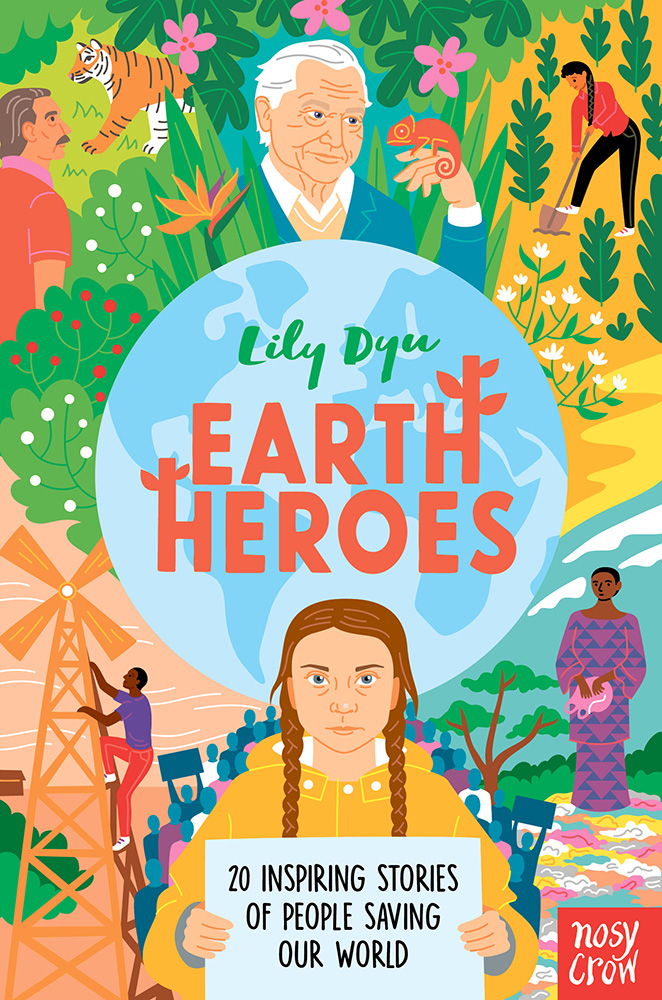
The above story was written by writer Lily Dyu for her beautifully illustrated book Earth Heroes published by Nosy Crow publishing.
Climate Heroes collaborated with Earth Heroes to publish several of their stories on the website.
Earth Heroes
Publication date: 03 Oct 2019
ISBN: 9781788008525
Size: 138 x 204 mm
Length: 272 pages
